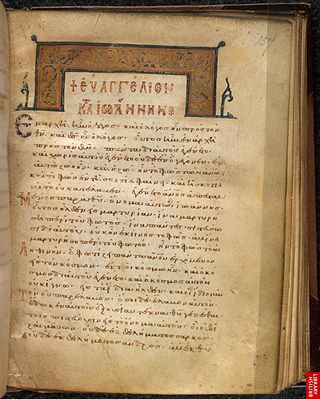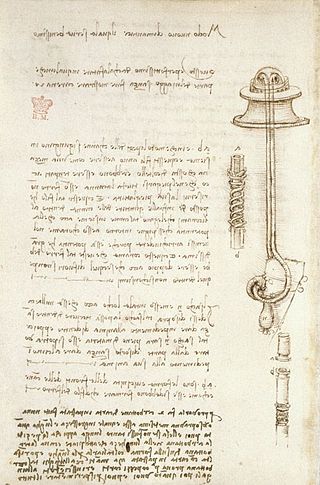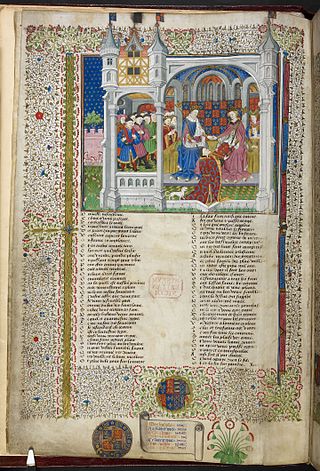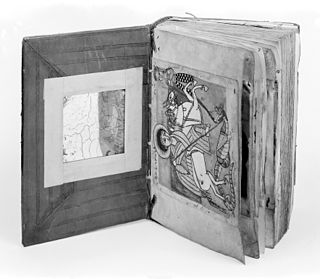Related Research Articles

Thomas Howard, 14th Earl of Arundel KG, was an English peer, diplomat and courtier during the reigns of King James I and King Charles I, but he made his name as a Grand Tourist and art collector rather than as a politician. When he died he possessed 700 paintings, along with large collections of sculptures, books, prints, drawings, and antique jewellery. Most of his collection of marble carvings, known as the Arundel marbles, was eventually left to the University of Oxford.

The National Library of Wales, in Aberystwyth, is the national legal deposit library of Wales and is one of the Welsh Government sponsored bodies. It is the biggest library in Wales, holding over 6.5 million books and periodicals, and the largest collections of archives, portraits, maps and photographic images in Wales. The Library is also home to the national collection of Welsh manuscripts, the National Screen and Sound Archive of Wales, and the most comprehensive collection of paintings and topographical prints in Wales. As the primary research library and archive in Wales and one of the largest research libraries in the United Kingdom, the National Library is a member of Research Libraries UK (RLUK) and the Consortium of European Research Libraries (CERL).

A national library is a library established by a government as a country's preeminent repository of information. Unlike public libraries, these rarely allow citizens to borrow books. Often, they include numerous rare, valuable, or significant works. A national library is that library which has the duty of collecting and preserving the literature of the nation within and outside the country. Thus, national libraries are those libraries whose community is the nation at large. Examples include the British Library in London, and the Bibliothèque nationale de France in Paris.

The Cotton or Cottonian library is a collection of manuscripts that came into the hands of the antiquarian and bibliophile Sir Robert Bruce Cotton MP (1571–1631). The collection of books and materials Sir Robert held is one of the three "foundation collections" of the British Museum in 1753. It is now one of the major collections of the Department of Manuscripts of the British Library. Cotton was of a Shropshire family who originated near Wem and were based in Alkington and employed by the Geneva Bible publisher, statesman and polymath Sir Rowland Hill in the mid 16th century.

Mary FitzAlan, Duchess of Norfolk was an English noblewoman, translator of the English language, and wife of Thomas Howard, 4th Duke of Norfolk

Lectionary 183, designated by siglum ℓ183 is a Greek manuscript of the New Testament, written on parchment in uncial letters. Biblical scholars Westcott and Hort labelled it by 38e,and biblical scholar Frederick H. A. Scrivener by 257e. Using the study of comparative writings styles (palaeography), it has been assigned to the 10th century. The manuscript has some missing portions and gaps at the end and inside, but they were supplied by a later hand. It is faded in parts.

Minuscule 476, ε 1126, is a Greek minuscule manuscript of the New Testament, on parchment. Palaeographically it has been assigned to the 11th century. The manuscript was adapted for liturgical use. It has liturgical books and full marginalia. Scrivener labelled it by number 566. The codex is in the British Library as Arundel MS 524.

Lectionary 187 or Arundel 536, designated by siglum ℓ187 is a Greek New Testament manuscript written on parchment. Biblical scholar Frederick H. A. Scrivener labelled it by 256e. Using the study of comparative writing styles (palaeography), it has been assigned to the 13th century. The manuscript has several gaps. It forms part of the British Library Arundel Manuscripts.

Codex Arundel, is a bound collection of pages of notes written by Leonardo da Vinci and dating mostly from between 1480 and 1518. The codex contains a number of treatises on a variety of subjects, including mechanics and geometry. The name of the codex came from the Earl of Arundel, who acquired it in Spain in the 1630s. It forms part of the British Library Arundel Manuscripts.

The British Museum Library: A Short History and Survey is a book by Arundell Esdaile published by George Allen & Unwin, London, in 1946. It was reprinted in 1979 by Greenwood Press, Westport, Conn. from the 1948 ed. published by G. Allen & Unwin, London, which was issued as no. 9 of the Library Association series of library manuals. Esdaile's book serves as a historical survey of the British Museum Library when the museum and library departments were housed in the same building. The book traces the entire history of the institution, from 1753 to 1945.

Hugh Howard was a portrait-painter and collector of works of art from Dublin.

The King's Library was one of the most important collections of books and pamphlets of the Age of Enlightenment. Assembled by George III, this scholarly library of over 65,000 volumes was subsequently given to the British nation by George IV. It was housed in a specially built gallery in the British Museum from 1827 to 1997 and now forms part of the British Library. The term "King's Library" was until recently also used to refer to the gallery in the British Museum built for the collection, which is now called the "Enlightenment Gallery" and displays a wide range of objects relating to the Enlightenment.
The Stowe manuscripts are a collection of about two thousand Irish, Anglo-Saxon and later medieval manuscripts, nearly all now in the British Library. The manuscripts date from 1154 to the end of the 14th century.

The Ashley Library is a collection of original editions of English poets from the 17th century onwards, including their prose works as well as those in verse, collected by the bibliographer, collector, forger, and thief Thomas James Wise. The library was sold to the British Museum by his widow, Frances Louise Greenhaigh Wise, in 1937 for £66,000. It was named after the street in which Wise lived when he started the collection.
In book-collecting as in other things, the sum of all is that what interests you is what concerns you. Now to this end and purpose alone I also hold the Ashley Library to be wonderful, but it has an added wonder in that it reveals so exquisite a discrimination and so great a reverence for our masterpieces of literature... the great catalogue of his life's work and love, which is in effect a history of English literature during the last 300 years, may well appear as a blazing star, or an Angel, to his sight.

The Howard Psalter and Hours is a 14th-century illuminated prayerbook. It includes a liturgical Psalter with canticles and litany, the Office of the Dead, a calendar of East Anglian origin and an incomplete Hours of the Passion. It was produced between 1310 and 1320. It is written in Latin in a Gothic script in two columns per page. There are 115 extant folios which measure 360 by 235 mm. The text block occupies an area of 250 by 166 mm. It is bound together with the De Lisle Psalter, a contemporary psalter.

The Royal manuscripts are one of the "closed collections" of the British Library, consisting of some 2,000 manuscripts collected by the sovereigns of England in the "Old Royal Library" and given to the British Museum by George II in 1757. They are still catalogued with call numbers using the prefix "Royal" in the style "Royal MS 2. B. V". As a collection, the Royal manuscripts date back to Edward IV, though many earlier manuscripts were added to the collection before it was donated. Though the collection was therefore formed entirely after the invention of printing, luxury illuminated manuscripts continued to be commissioned by royalty in England as elsewhere until well into the 16th century. The collection was expanded under Henry VIII by confiscations in the Dissolution of the Monasteries and after the falls of Henry's ministers Cardinal Wolsey and Thomas Cromwell. Many older manuscripts were presented to monarchs as gifts; perhaps the most important manuscript in the collection, the Codex Alexandrinus, was presented to Charles I in recognition of the diplomatic efforts of his father James I to help the Eastern Orthodox churches under the rule of the Ottoman Empire. The date and means of entry into the collection can only be guessed at in many if not most cases. Now the collection is closed in the sense that no new items have been added to it since it was donated to the nation.

The Lansdowne manuscripts are a significant named collection of the British Library, based on the collection of William Petty, 1st Marquess of Lansdowne. The purchase of the collection by the British Museum was in 1807.

The King's manuscripts are a collection of 446 historical manuscripts held in the British Library. The collection was originally assembled by King George III, and was passed to the British Museum by George IV in 1823 as part of the King's Library. The manuscripts were at first kept with the printed books, but in 1840 were transferred to the Department of Manuscripts. The manuscript maps remained in the Department of Printed Books, and are now held in the Map Library as the King's Topographical Collection.

Ethiopian manuscripts are known to have reached Europe as early as the fifteenth century, perhaps even earlier, through Egypt, Ethiopian pilgrims to the Holy Land and through members of the Ethiopian monastery of St Stephen of the Abyssinians in Rome. Subsequently, travellers, missionaries, military personnel and scholars contributed to the development of collections outside Ethiopia. In Europe, the three biggest collections of Ethiopian manuscripts are in Rome, in Paris and in London. These three organisations together hold about 2,700 manuscripts. Oriental collections of nearly all significant European libraries also have Ethiopian material, with some still pursuing a policy of acquisition. The five largest collections in North America are at Catholic University, the Library of Congress, UCLA, Princeton, and Howard University.
James Thomson Gibson-Craig was a Scottish book collector and writer to the Signet.
References
- ↑ British Library : Collection Guides : Arundel Manuscripts, Retrieved 25 December 2022.